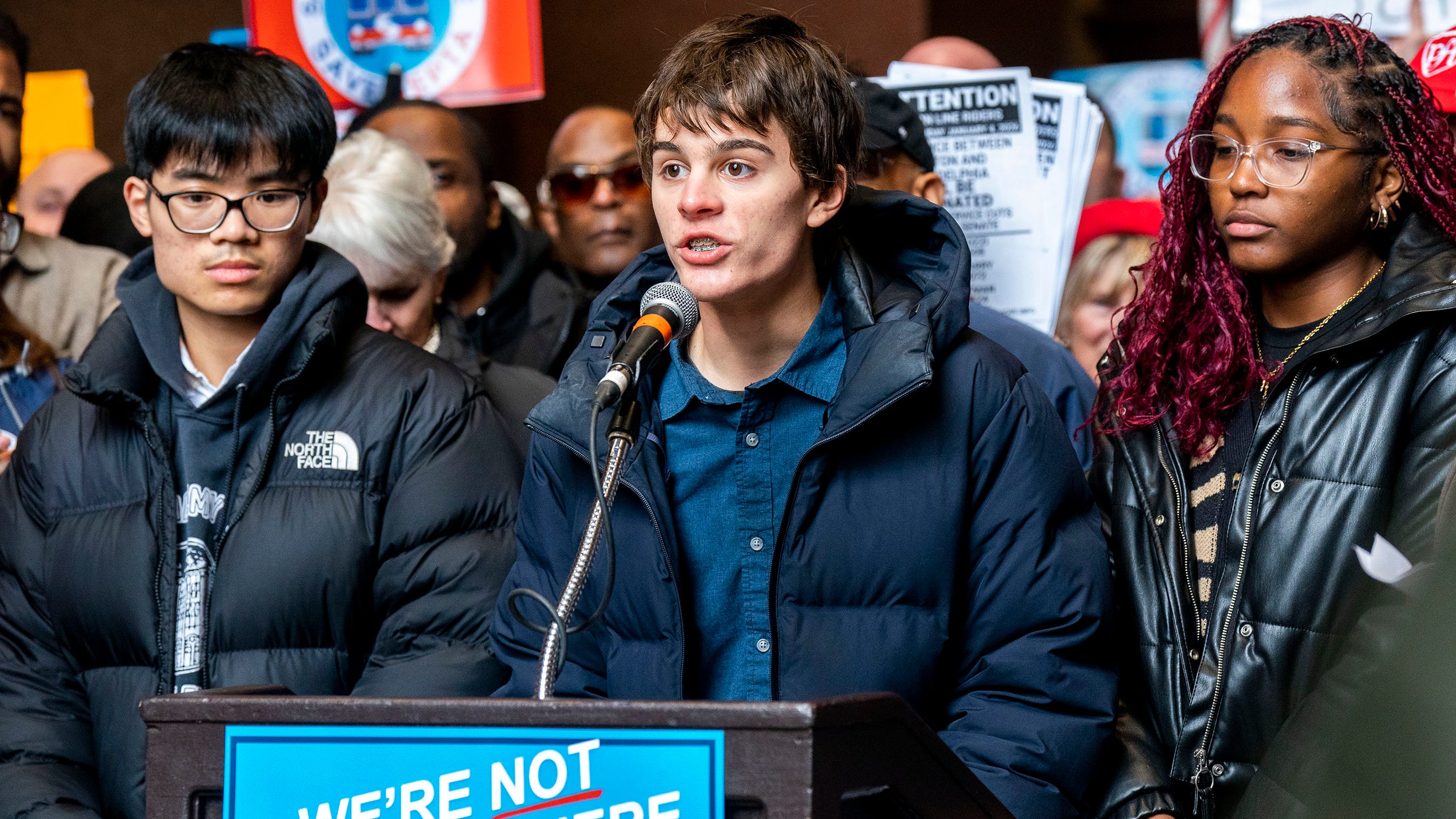
Student voices concern over the proposed SEPTA cuts during rally
Social science honors student Jaylah Fitzgerald, from the Academy at Palumbo, addresses the crowd at the Save SEPTA rally against the proposed transit cuts
Millions of student loan borrowers in default could see their wages garnished soon after the U.S. Department of Education announced it would resume involuntary collections for the first time since March 2020.
Education secretary Linda McMahon unveiled the plan in an announcement Monday night, saying the forced repayments for borrowers 270 days or more behind on their loan payments begins May 5.
“American taxpayers will no longer be forced to serve as collateral for irresponsible student loan policies,” McMahon said in a statement.
Student loan collections were paused near the start of the pandemic in President Donald Trump’s first term and later extended multiple times by former President Joe Biden.
Monthly student loan payments were resumed in September but the hold on forced collections for defaulted borrowers remained until now.
Mike Pierce, the executive director of the Student Borrower Protection Center, told USA TODAY that federal law gives borrowers the right to make payments they can afford, but that many of the programs that make that possible have been paused by litigation or threatened since Trump took office.
“Since February, Donald Trump and Linda McMahon have blocked these borrowers’ path out of default and are now feeding them into the maw of the government debt collection machine,” he said. “This is cruel, unnecessary and will further fan the flames of economic chaos for working families across this country.”
About 42 million borrowers account for 1.6 trillion in student loan debt across the U.S., including Puerto Rico and some borrowers outside the country or its territories.
As of September, approximately 1.7 million Pennsylvanians share about $63 billion in student loan debt, ranking sixth in the nation for debt behind California, Texas, Florida, New York and Georgia.
Are my student loans in default?
The department estimates more than 5 million borrowers have not made a payment in 360 days and 4 million more are between 91 to 180 days behind on payments.
The agency will urge borrowers to either pay their bills, enroll in an income-driven repayment plan, or sign up for loan rehabilitation or consolidation.
Only about 38% of borrowers are up-to-date on their student loan repayments and most of the remaining borrowers are either delinquent on their payments, in an interest-free forbearance, or in an interest-free deferment, according to the department.
When will I get a notice of wage garnishment for student loans in default?
The department’s Office of Federal Student Aid (FSA) will send required notices of wage garnishment for defaulted borrowers later this summer.
Borrowers can check the status of the federal student loans at www.studentaid.gov.
What happens in student loan default?
The loan holder can withhold up to 15% of a borrower’s disposable pay — the amount that remains from an employee’s pay after deductions — without taking the borrower to court, according to the FSA website.
Federal law also allows for the government to use federal or state income tax refunds, Social Security payments or other federal payments to repay student loan debt, a process known as Treasury offset.
Being in default could also prevent the borrower from obtaining future student loans or grants or lose eligibility for other benefits like the ability to choose a repayment plan.
Borrowers can avoid garnishment by making voluntary payments as well.
More information on how to get out of default, such as loan rehabilitation or consolidation, can be found at www.StudentAid.gov/end-default.
Contributing: Zachary Schermele, education reporter for USA TODAY
Chris Ullery can be reached at cullery@couriertimes.com




